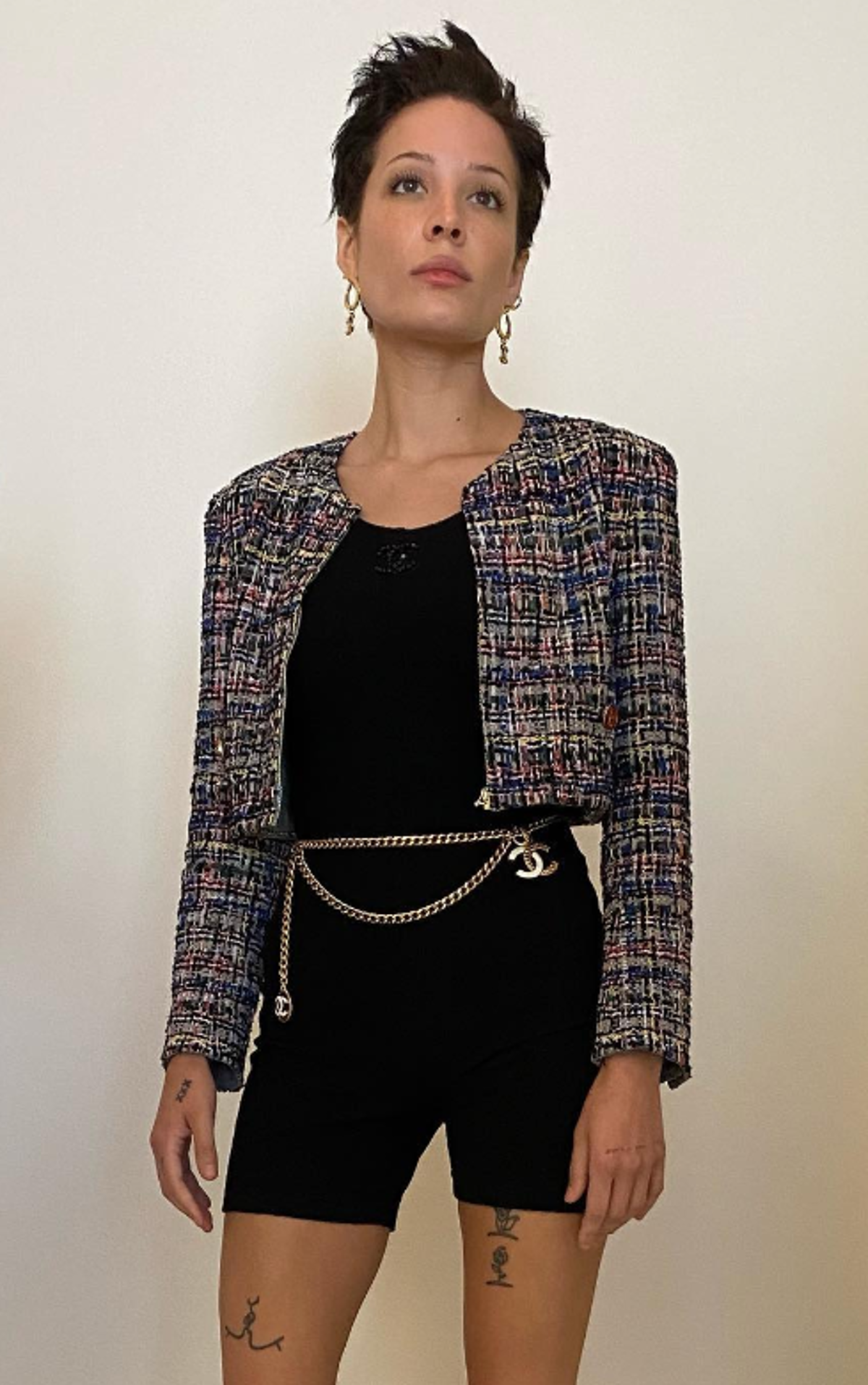Living With Endometriosis
- Singer Halsey is among millions of women across the globe living with a chronic illness known as endometriosis, which affects approximately 10 percent of American women ranging in age between 15 and 44, according to Johns Hopkins Medicine.
- Endometriosis is an often painful disorder in which tissue similar to the tissue that normally lines the inside of your uterus the endometrium grows outside your uterus.
- Sadly, we've heard many stories of women's concerns being dismissed by doctors. That's why being your own advocate can be key to getting a correct diagnosis and obtaining the best treatment possible while dealing with a diagnosis.
Halsey, born with the name Ashley Nicolette Frangipane, first opened up about her struggle with endometriosis (an often painful condition in which tissue similar to the tissue that normally lines the inside of your uterus grows outside your uterus) back in 2016 on social media.
Read More
"Reproductive things is not really something people want to talk about, it's kind of considered a taboo thing. Growing up, I know for me, periods were always these hidden thing,” Halsey added. “You're sneaking to the bathroom in high school with your tampon tucked up your sleeve. God forbid someone saw it. And because of that, people aren't really open about the pain, they're worried people are going to belittle them."
"[I'm] trying to normalize the conversation and say, 'It's okay to talk about reproductive illness, this doesn't make you weak, this makes you strong and you should be proud and vocal,'” she said. “And the more you talk about it, the more likely you're going to help one of your friends who might not know that they have it because they may be afraid of speaking about it, too."
If any of my fans or followers have #endometriosis 💛 having a rough time today. laying in bed thinking of you. pic.twitter.com/LOQVn5BsSg
— h (@halsey) January 29, 2016
Halsey has acted as a role model for others with the condition as she hasn’t let it stop her from living life to the fullest.
For example, earlier this year she attended the 2022 Grammy Awards after undergoing surgery for endometriosis.
"As luck would have it, I'm attending tomorrow for the first time in years and I had surgery again (you guessed it) three days ago," she wrote in an Instagram post, featuring herself in a hospital gown. "Only posting this to say, if you see me be gentle lol I'm fragile. Fragile but excited."
Back in 2017, after another surgery she underwent, Halsey commented on how “mentally exhausting and physically painful” the condition is.
"If you suffer from chronic pain or a debilitating disease please know that I have found time to live a crazy, wild, rewarding life AND balance my treatment and I hope so much in my heart that you can too,” she said in a since-deleted social media post, according to People.
Endometriosis: A Painful Disorder
Endometriosis can be a very painful disorder. Essentially what happens is the abnormal tissue outside of your uterus thickens, breaks down and bleeds with each menstrual cycle. But because this tissue has no way to exit your body like normal endometrial tissue, it becomes trapped. This can cause cysts, irritation and scar tissue and adhesions abnormal bands of fibrous tissue that can cause pelvic tissues and organs to stick to each other to form.
According to the Mayo Clinic, you shouldn't worry too much about endometriosis increasing your risk for developing ovarian cancer. And while ovarian cancer does occur at a higher rate in women with endometriosis, studies suggest that any increase in risk is relatively low. Additionally, endometriosis can lead to the development of another type of cancer called endometriosis-associated adenocarcinoma, but this cancer is rare.
According to the Mayo Clinic, symptoms of endometriosis can include the following:
- Painful periods (dysmenorrhea). Pelvic pain and cramping may begin before and extend several days into a menstrual period. You may also have lower back and abdominal pain.
- Pain with intercourse. Pain during or after sex is common with endometriosis.
- Pain with bowel movements or urination. You're most likely to experience these symptoms during a menstrual period.
- Excessive bleeding. You may experience occasional heavy menstrual periods or bleeding between periods (intermenstrual bleeding).
- Infertility. Sometimes, endometriosis is first diagnosed in those seeking treatment for infertility.
- Other signs and symptoms. You may experience fatigue, diarrhea, constipation, bloating or nausea, especially during menstrual periods.
Both endometriosis and ovarian cancer can be tricky to diagnose. And given the fact changes to your menstrual period and lower back pain are possible symptoms of ovarian cancer, it is understandable that doctors may want to rule out the possibility of ovarian cancer.
Advocating For Yourself While Navigating the Medical World
Regardless, if you ever feel like something is off, it's important to see your doctor right away. And don't be afraid to get a second opinion if you feel like your concerns aren't being heard.
You are your biggest advocate when it comes to your own healthcare, and doing so is key to obtaining the best treatment possible while dealing with a cancer diagnosis or any diagnosis for that matter. It's also important to be your own advocate because of provider bias so you can make sure your doctor sees you as an individual, and doesn't fall back on assumptions based upon the color of your skin.
Where Does Endometriosis Occur?
Endometriosis usually occurs on or near reproductive organs in the pelvis or abdomen, according to Johns Hopkins Medicine. Other areas is can be found in are the fallopian tubes, ligaments around the uterus (uterosacral ligaments), lining of the pelvic cavity, ovaries, outside surface of the uterus, space between the uterus and the rectum or bladder.
In rare circumstances, it can also grow on and around the bladder, cervix, intestines, rectum, stomach (abdomen), and vagina or vulva.
“Endometrial tissue growing in these areas does not shed during a menstrual cycle like healthy endometrial tissue inside the uterus does,” Johns Hopkins Medicine explains. “The buildup of abnormal tissue outside the uterus can lead to inflammation, scarring and painful cysts. It can also lead to a buildup of fibrous tissues between reproductive organs that causes them to ‘stick’ together.
Questions to Ask Your Doctor
- What might my symptoms mean? What plan can we make to deal with them?
- Are other treatment options available in my situation?
- What will the timeline for my treatment look like?
- What literature can you give me about my treatment plan?
Spotting the Early Symptoms of Ovarian Cancer
Contributing: SurvivorNet Staff
Learn more about SurvivorNet's rigorous medical review process.


